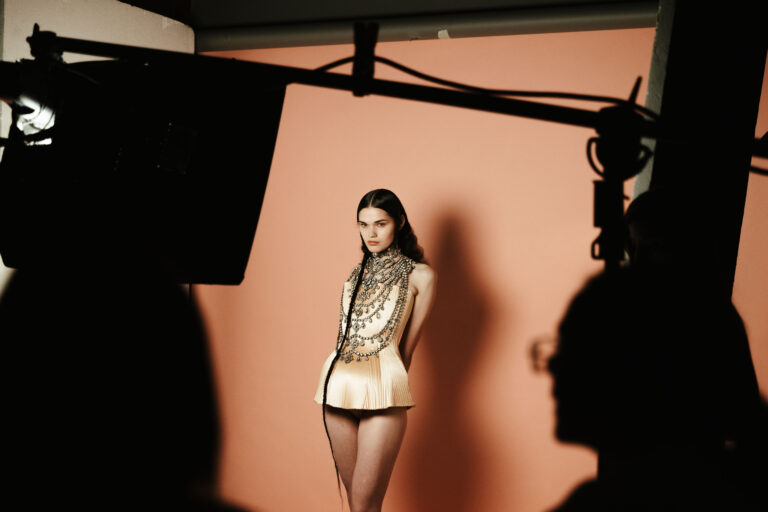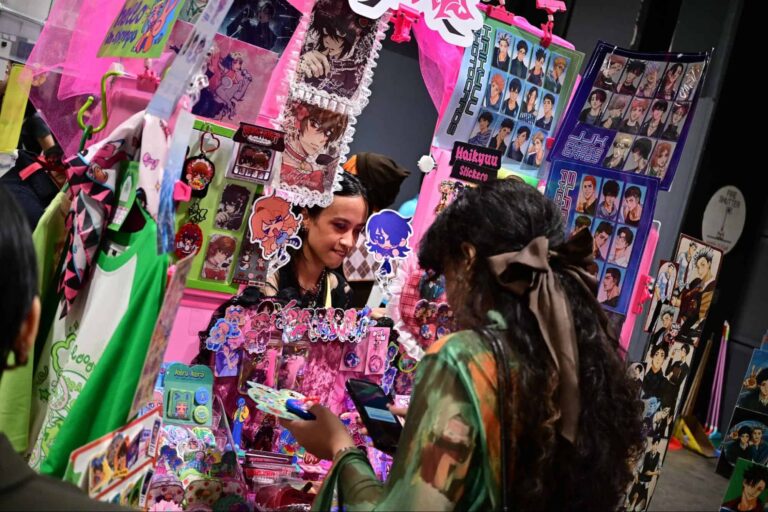Book Review: Revisiting Bali and Java through Liu Kang’s Photographs


In 1952, four China-born artists — Liu Kang (1911–2004), Chen Wen Hsi (1906–91), Chen Chong Swee (1910–85), and Cheong Soo Pieng (1917–83) — journeyed from Singapore to Java and Bali in search of artistic inspiration. In 1953, the fruits of their seven-week expedition were shown back in Singapore, in an exhibition that has since become a milestone in the national art histories of Singapore and Malaysia.
Writing in 1980, art historian T.K. Sabapathy heralded the Four Artists to Bali exhibition for introducing ways of depicting the human figure that became “indelibly linked” to the Nanyang art movement. Since then, the Bali trip and exhibition have become the subjects of much scholarly discussion and critical reappraisal.
Currently on show at the National Library Building, the exhibition Untold Stories: Four Singapore Artists’ Quest for Inspiration in Bali 1952 presents the “Bali trip” through artworks, photographs, interactive elements, and archival materials. Published in conjunction with the exhibition, Bali 1952: Through the Lens of Liu Kang is a sumptuous photo publication that brings us back to this pivotal moment in the development of Malayan and Singaporean art.

About the book
During his trip through Java and Bali, Liu Kang took over 1,000 photographs. These had been forgotten by his family until his daughter-in-law Gretchen Liu, an independent writer and scholar, rediscovered them in his study in 2016. While another four years would lapse before the COVID-19 lockdown provided Gretchen with the opportunity to revisit these photographs, Bali 1952 is a result of that rediscovery.
The book features over 200 of Liu Kang’s black-and-white photographs, giving us a sense of the architecture, landscapes, and scenes of daily life that the artists encountered in Bali and Java. There are also photographs of dancers and models whom they hired for their life drawing sessions in Bali — involving, for instance, Balinese women reenacting rice pounding, a task that seemed to interest the artists very much (see pages 125, 126, and 253 for the photographs). Even though Liu’s negatives were exposed many decades back, they remain in good condition. They are carefully scanned by FotoHub and printed on Exel Bulky Satin Ivory paper, giving the photographs a subtle, warm tonality.

Gretchen plays a key role in Bali 1952, crafting its narrative by selecting and sequencing the photographs to unfold alongside her informative text. She also reconstructs the social and cultural milieu that the artists encountered in Bali and Java. Her main sources include Liu’s diary of the trip and the private letters that he and Chen Chong Swee sent home to their wives; Liu’s letters are also reproduced and translated in the publication. Additional sources include interviews and writings attributed to the artists in which they recalled their landmark trip.

Liu Kang and photography
In an earlier publication, Gretchen writes that Liu Kang was already a consummate photographer in 1926, when he began his studies in Shanghai. Reviewing his photographic practice since then, researcher Yow Siew Kah argues that Liu often used the camera to record subjects that attracted him, but thought of photography less as art than as a mechanical process that lacked human agency. Instead he valorised unencumbered creativity, pitted against the “lifeless and unthinking” photograph, as a key criterion in artmaking.
Yet, looking at Liu’s photographs of Bali and Java today, one is struck by their beauty, which reveal his compositional sensibilities and aesthetic taste. This does not compromise the ethnographic value of his photographs. At the same time, we can sense his excitement whenever he quickly expended his negatives to capture scenes that piqued his curiosity.

In Jakarta, for instance, he used up 24 exposures (two rolls of medium-format negative film) to photograph the girls and ladies who were bathing and doing their washing along the public canal at Jalan Hayam Wuruk. A few of them reciprocated the gaze of Liu (and his camera) with amusement; others are seen with looks of indifference, embarrassment, or even slight annoyance (pages 31–34). His photographs are also marked by the relentless passage of time, as we are keenly aware that the lifeworld seen in his photographs exists no more.
The joys of travel
In many ways, the Bali trip was a dream come true for Liu Kang. Gretchen suggests that Liu’s fascination with Bali germinated when he encountered a Balinese dance troupe and gamelan orchestra at the Paris Colonial Exposition in 1931. In his letters to his wife during the trip, we sense his palpable excitement in fulfilling his dream of experiencing this paradise on earth. In the last letter that he sent from Surabaya before returning to Singapore, Liu described himself almost suffering a fit as his flight left Bali for East Java. He declared: “I have never in my life loved a place as completely as I love Bali… And because my love is deep, how can my heart not break upon parting? How can it not break?”

Liu himself appears in several of the photographs in Bali 1952. He is sometimes seen performing for the camera — putting on an exaggerated pose (page 229) or simply lifting his hat (pages 35, 57, 78, 113). These performative gestures suggest Liu’s excitement at finally visiting Bali and Java and point towards the role of photography in his travels, as he used the camera to record his joy and experiences. Of course, it is also possible that he wished to further distinguish himself from his fellow artists and the other people who appeared in the same photographs as him.
Bali and tourism
Inevitably, Liu’s photographs also captured the ongoing opening-up of Bali to tourism, revealing the role that art and artists played in altering the island. A few of his photographs show his fellow Chinese artists in westernised urban wear, holding cameras or seated behind drawing boards, recording the scenes in front of them. In the same photographs, we see native Balinese individuals in ceremonial or everyday attire serving as the artists’ subject matter — posing for them, or allowing them to record their communal labour of rice cultivation (pages 129, 178, 181).
These photographs show the interactions between an urban Chinese modernity and traditional or indigenous life in Bali, helping us visualise the ongoing cultural change on the island.
At the house compound of Adrien-Jean Le Mayeur de Merprès (1880–1958) in Sanur, Liu photographed one of the commercial entertainments that the Belgian artist and his wife, the dancer Ni Wayan Pollok Tjoeglik (1917-85), mounted for the tourists. In Bali 1952, Gretchen writes that Ni Pollok was one of the first to organise these tourist-oriented programmes, which “consisted of Balinese dance and gamelan performances together with a sumptuous meal served under the frangipani trees.”

In his excitement, Liu Kang expended six rolls of film on the event. Gretchen’s sequencing of his photographs begins with the dining tables set by the sea, alongside an image of the crowd of 50 to 60 guests, including British and Indian naval personnel, waiting in anticipation for the event to start (pages 103–104, 106). A few of the guests train their cameras on Ni Pollok as she performs for the crowd (page 105). There is also a photograph in which she is seen performing in the foreground, but the three naval personnel in the back appear more attracted to the seascape or the other Balinese women in the compound (page 108). Not surprisingly, “traditional” performances at scenic locations, to be consumed alongside delectable local cuisine, have since become staples in the tourist industry of Bali.
In closing, Bali 1952 is a beautiful photo publication that brings the sights and scenes of 1950s Bali and Java to life. Capturing the joys of travel as experienced by Liu Kang, the photographs help us visualise the roles of art and photography in turning Bali into a global travel destination.
___________________________________
Untold Stories: Four Singapore Artists’ Quest for Inspiration in Bali 1952 runs at the National Library Building till 3 August 2025.
Bali 1952: Through the Lens of Liu Kang retails at SGD $98. Till 31 December 2025, Plural Art Mag readers can use the discount code 195220 at this link for 20% off.
Want to find out more about the artists of the Bali trip? Read more stories on Liu Kang, Chen Wen Hsi, and Cheong Soo Pieng.
Header image: Installation view of Untold Stories. Image courtesy of The National Library Board.
Support our work on Patreon
Become a memberYou might also like
Start Looking at the Floors and Around You: Sights and Sound Bites from Art Outreach’s Art in Transit Tour

When Couture Gets Crafty: UBS House of Craft x Dior Arrives in Singapore

Fair Play? Rethinking Pop Culture Conventions and Their Place in the Art Landscape
